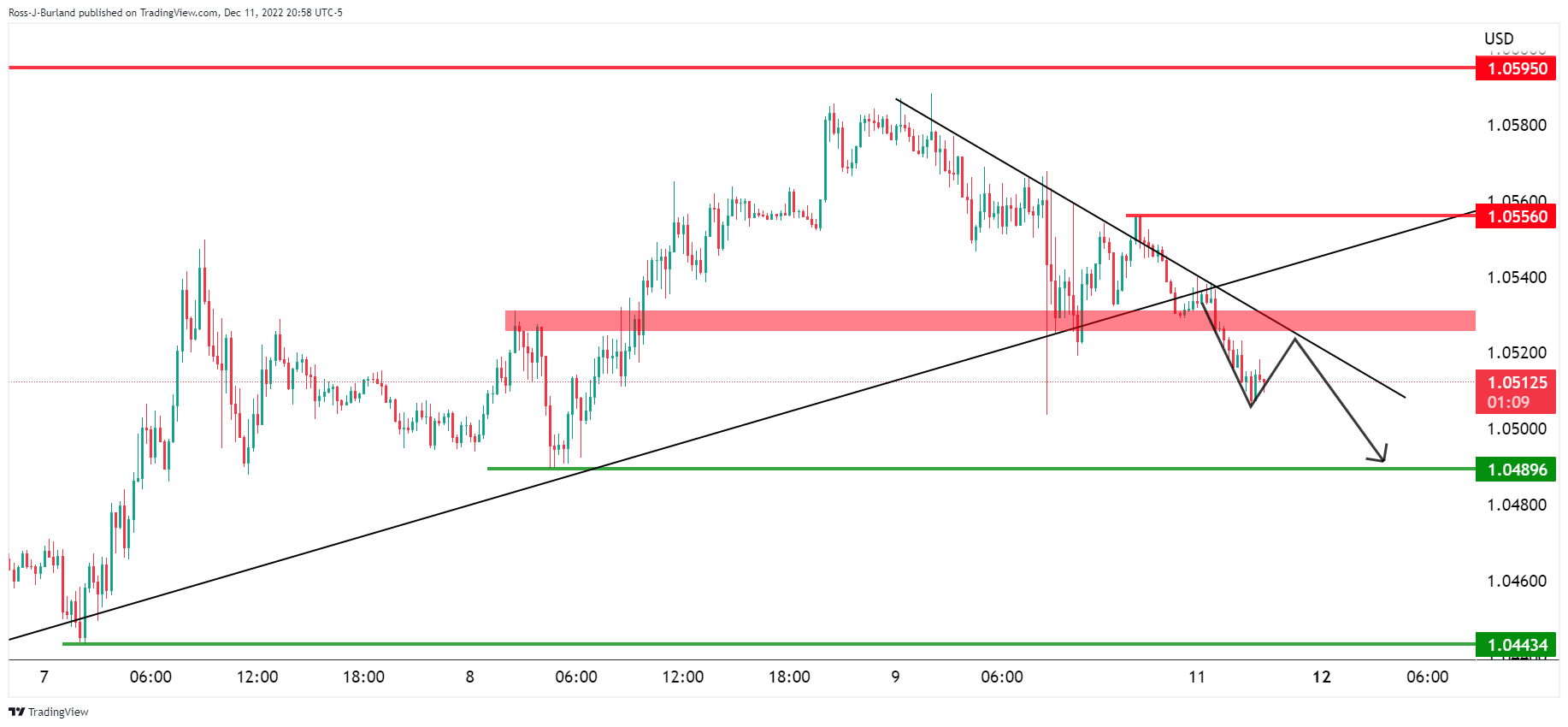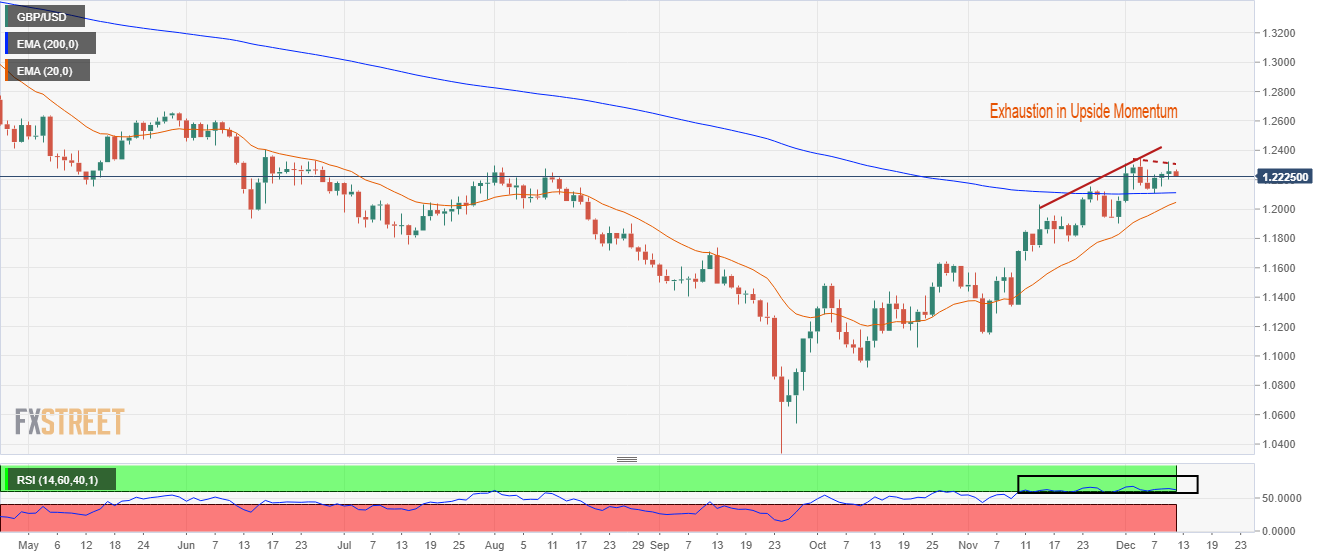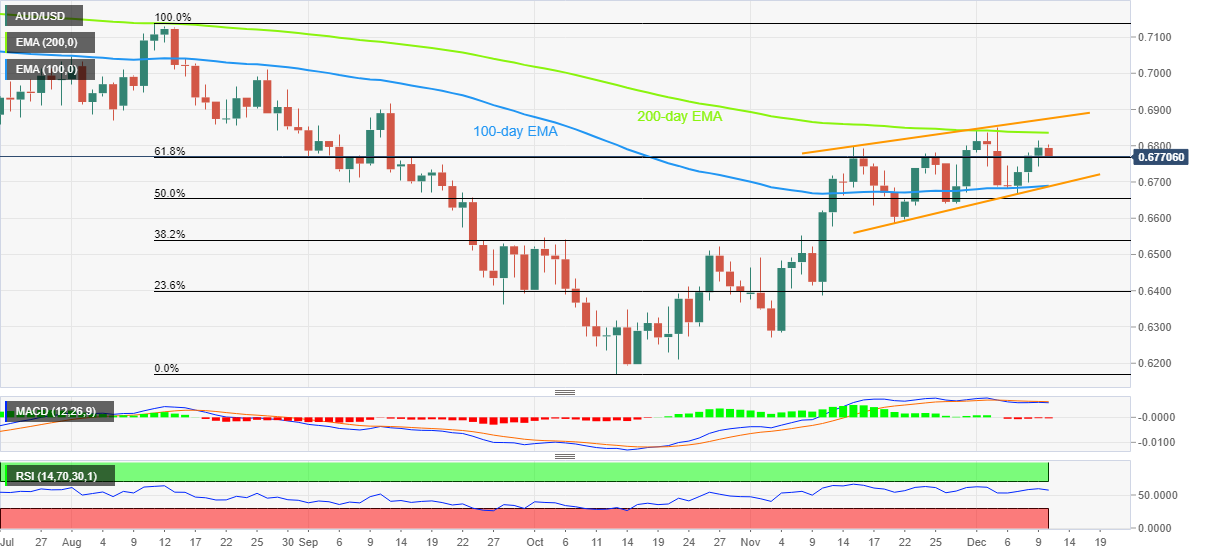- Gold price stays depressed after snapping four-day uptrend and confirming bearish chart pattern.
- United States inflation expectations test US Dollar bulls, as well as XAU/USD sellers, amid mixed mood ahead of key events.
- Headlines surrounding China, Russia also challenge sentiment and Gold price even as equities, Treasury bond yields rose.
- United States Consumer Price Index for November will be crucial for Gold traders.
Gold price (XAU/USD) holds lower ground near $1,780 after confirming a bearish chart pattern before a few hours. That said, the yellow metal’s latest inaction could be linked to the market’s cautious mood ahead of the United States' key inflation numbers for November, namely the Consumer Price Index (CPI). It should be noted that the Gold dropped the most in a week as the US Dollar began the crucial week on a positive note despite downbeat inflation expectations and upbeat performance of the equities, as well as the Treasury bond yields.
US Dollar rebound weighs on Gold price
US Dollar Index (DXY) carried Friday’s recovery moves to Monday and weighed on the Gold price. In doing so, the greenback’s gauge versus the six major currencies benefited from the market’s cautious mood while tracing the United States Treasury bond yields.
It’s worth observing, however, that the benchmark 10-year US Treasury bond yields rose three basis points (bps) to 3.61% but Wall Street also closed in the greed and tried to challenge the Gold bears by the end of Monday’s North American session.
With this, the DXY remains sidelined around 105.00 by the press time as traders await the key US inflation number, namely the US CPI, as well as the Federal Open Market Committee (FOMC) meeting announcements. The same appeared to challenge the latest Gold price moves ahead of the key catalysts.
As a result, Reuters stated that the dollar gained against most currencies on Monday in choppy trading ahead of key data expected to show United States inflation moderating in November on a year-on-year basis, and a Federal Reserve decision that likely slows the pace of rate increases at the conclusion of its two-day policy meeting on Wednesday.
Inflation Expectations fail to impress Gold buyers
Gold price remains on the back foot even as the New York Federal Reserve’s (Fed) Survey of Consumer Inflation Expectations appeared as downbeat. That said, the 1-year ahead inflation expectations slumped to their lowest level since 2021 and marked the biggest month-to-month decline in November on record. It’s worth observing that the latest week’s downbeat prints of the United States Producer Price Index (PPI) and UoM Consumer Sentiment Index, as well as the US ISM Services PMI and inflation expectations, helped the Gold buyers to keep the reins.
China, Russia news also please XAU/USD bears
In addition to the firmer US Dollar, headlines surrounding China and Russia also seemed to have weighed on the Gold price.
Although further easing in the Zero-Covid policy kept the equity traders’ optimism intact, the risk of more Sino-America tussles seemed to weigh on the sentiment, as well as the XAU/USD price. Chinese Foreign Ministry spokesman Wang Wenbin conveyed dislike for the US sanctions on two of their diplomats. “These illegal sanctions severely affected Sino-American relations,” Wang said per Reuters.
Elsewhere, Russian President Vladimir Putin’s rejection to supply oil to the countries respecting Europe-led price cap also raise the market’s fears and exert downside pressure on the Gold price.
United States Consumer Price Index is crucial for Gold
The early signals for the United States Consumer Price Index (CPI) for November hint at a softer print of 7.3% YoY, versus 7.7% prior figure. The monthly CPI is also likely to ease to 0.3% compared to 0.4% previous readings. It should be noted that the CPI ex Food & Energy appears to be the key and is expected to be unchanged at 0.3% MoM, which can surprise the Gold traders in case of a firmer print. It should be noted that the firmer inflation data can push the Federal Open Market Committee (FOMC) members to stay away from the bearish bias and defend the latest rate hikes, which in turn could signal more downside for the XAU/USD.
With this in mind, Analysts at ANZ said, “FOMC members can revise their forecasts up until lunchtime of the first day of the meeting, but we think the number (US CPI) would have to be around 0.6% m/m or higher on a core basis to raise the probability of a larger hike than 50bp.”
Gold price technical analysis
Gold price confirmed a one-month-old rising wedge bearish chart pattern with a daily closing below $1,788 support, now resistance. The bearish bias also justifies the downbeat signals from the Relative Strength Index (RSI) line, placed at 14, as well as the Moving Average Convergence and Divergence (MACD) indicator.
As a result, the yellow metal is all set, technically, to aim for the theoretical target surrounding $1,700. However, the 100-bar Simple Moving Average (SMA) and late November’s low, respectively near $1,768 and $1,721, could act as intermediate halts during the gold’s expected fall.
It’s worth noting that the XAU/USD weakness past $1,700 won’t hesitate to challenge the November 04 swing high surrounding $1,682.
Alternatively, recovery needs validation from the support-turned-resistance line of the aforementioned rising wedge, around $1,788.
Even so, a one-week-old descending resistance line near $1,805 and the stated wedge’s top line around $1,820 by the press time, could challenge the gold buyers.
Overall, the Gold price is likely to witness further downside as it braces for the key United States inflation data.
Gold price: Daily chart

Trend: Further downside expected


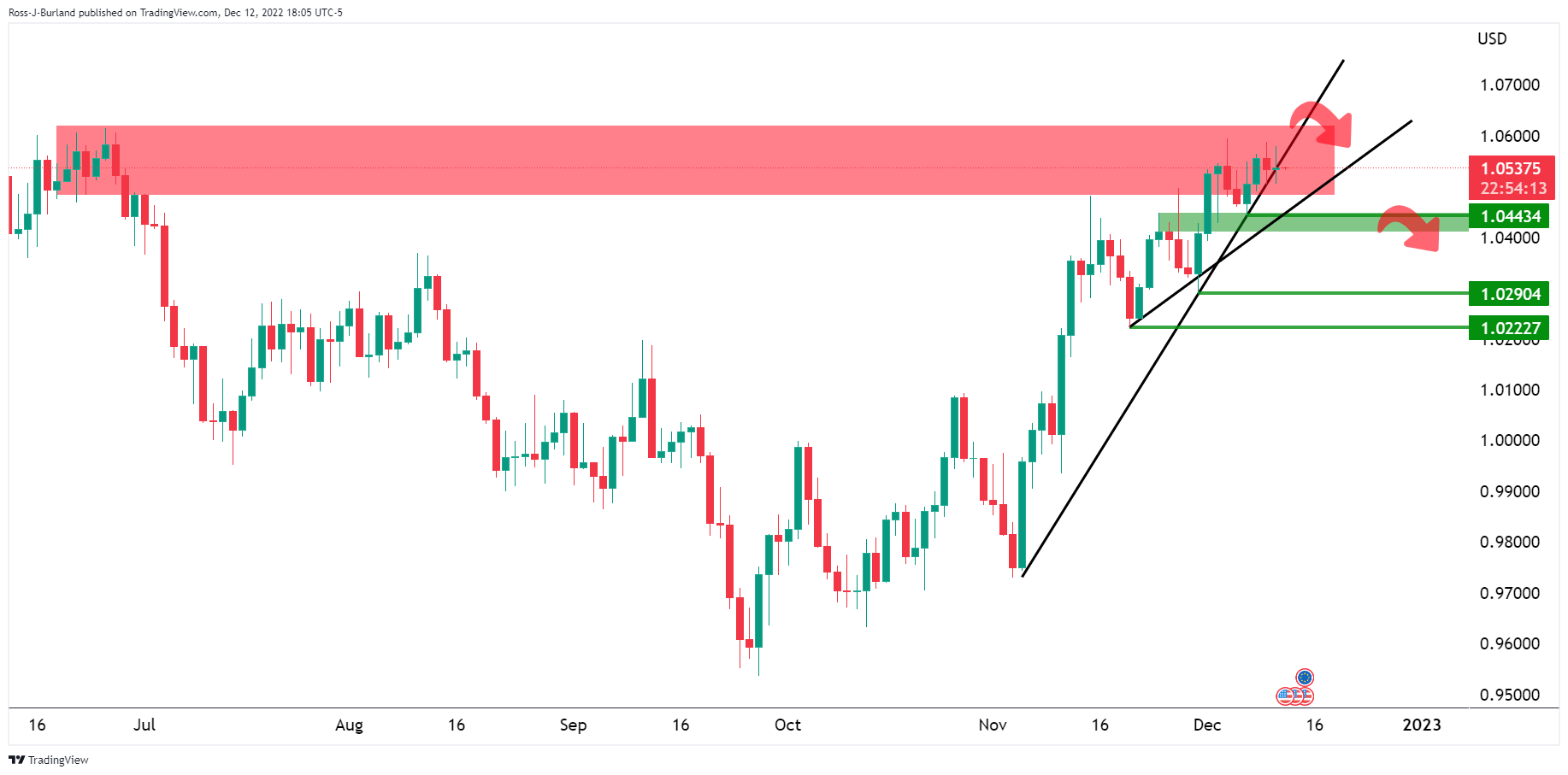
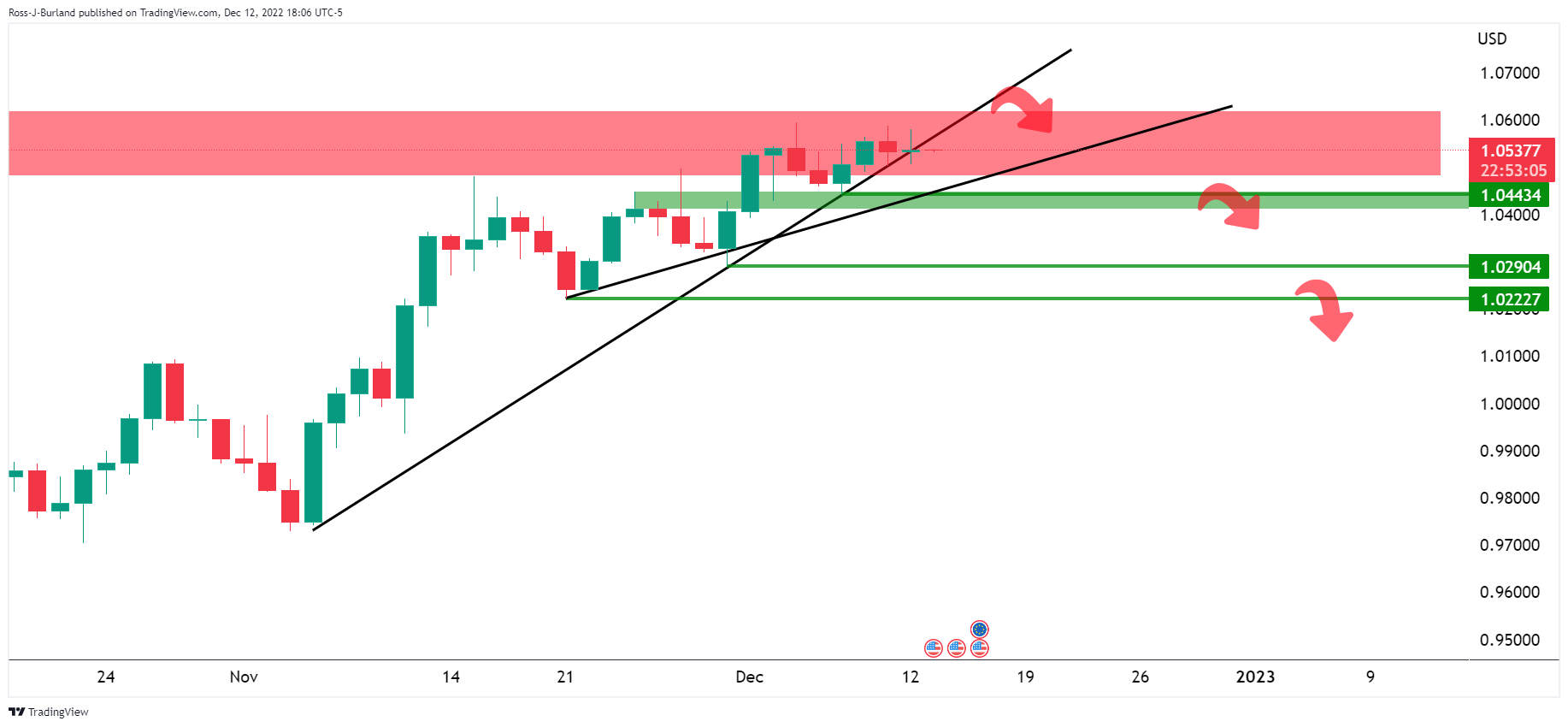
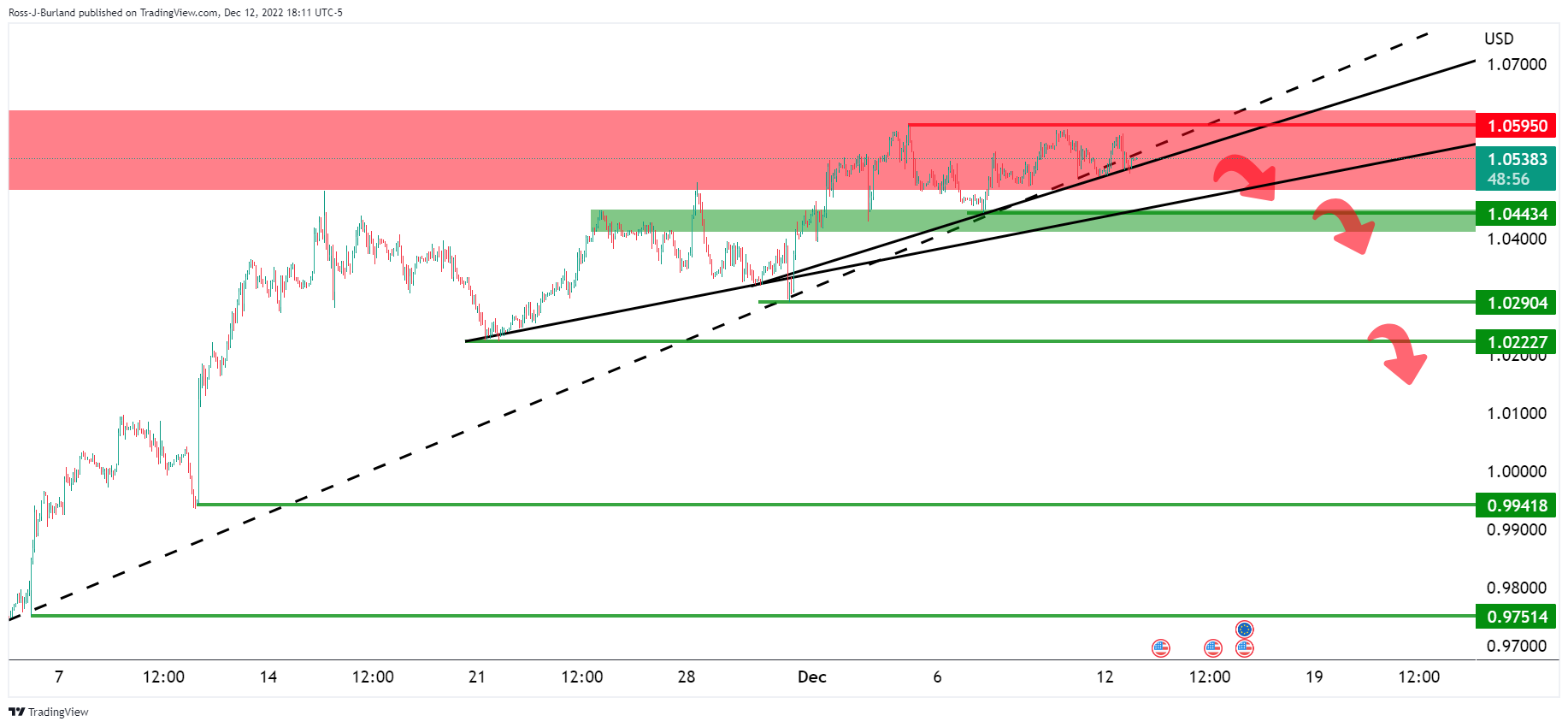
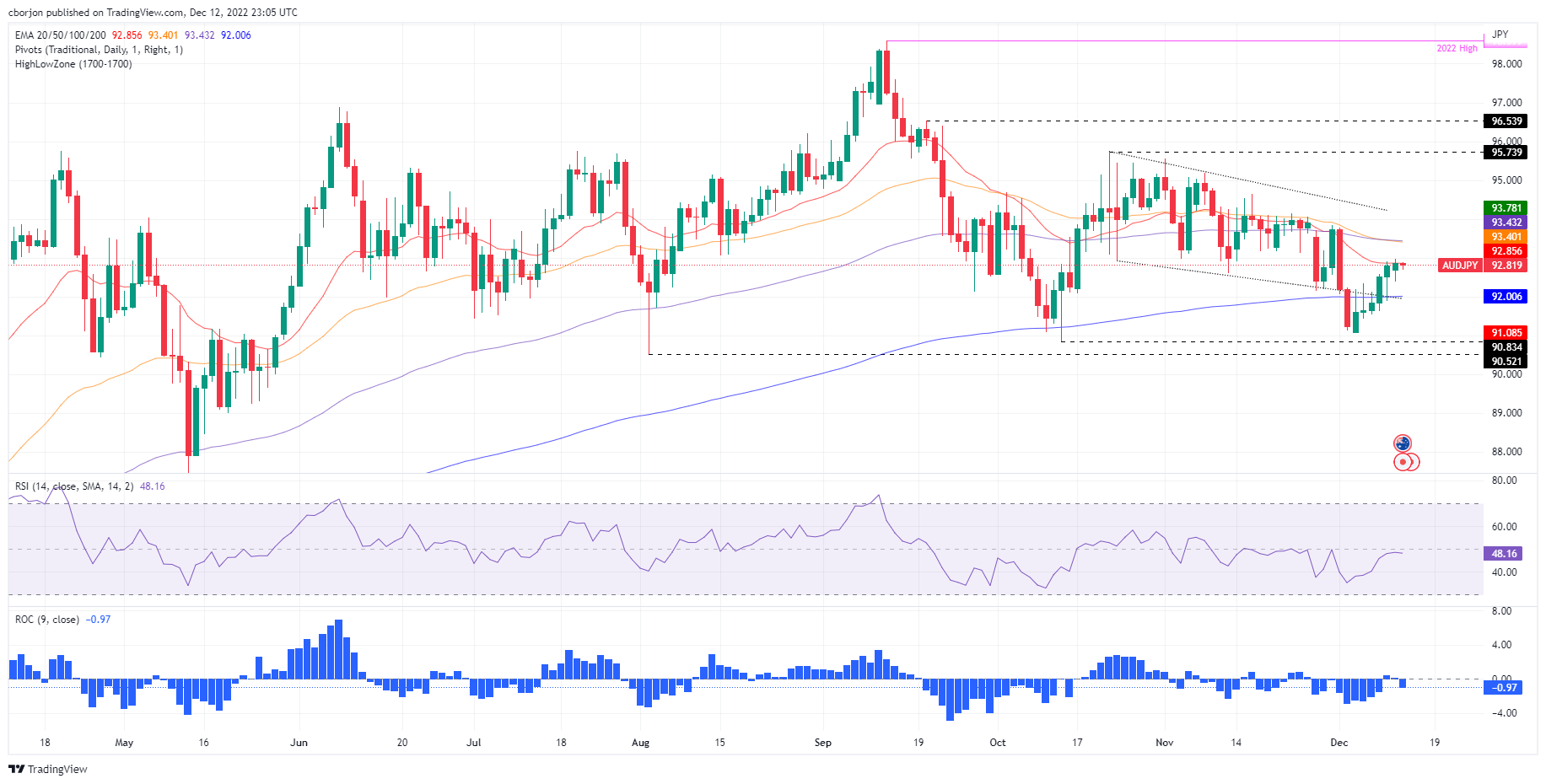

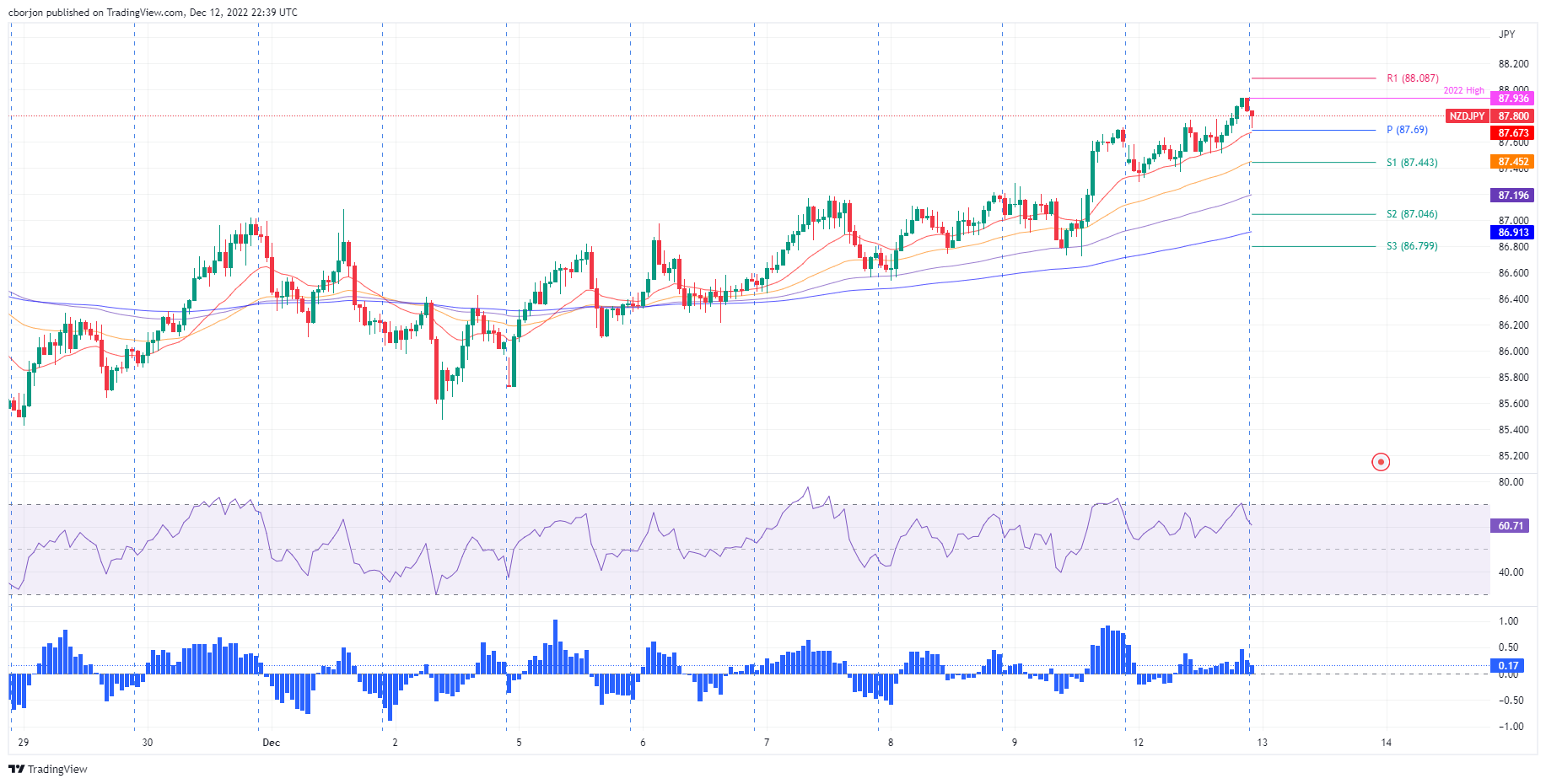


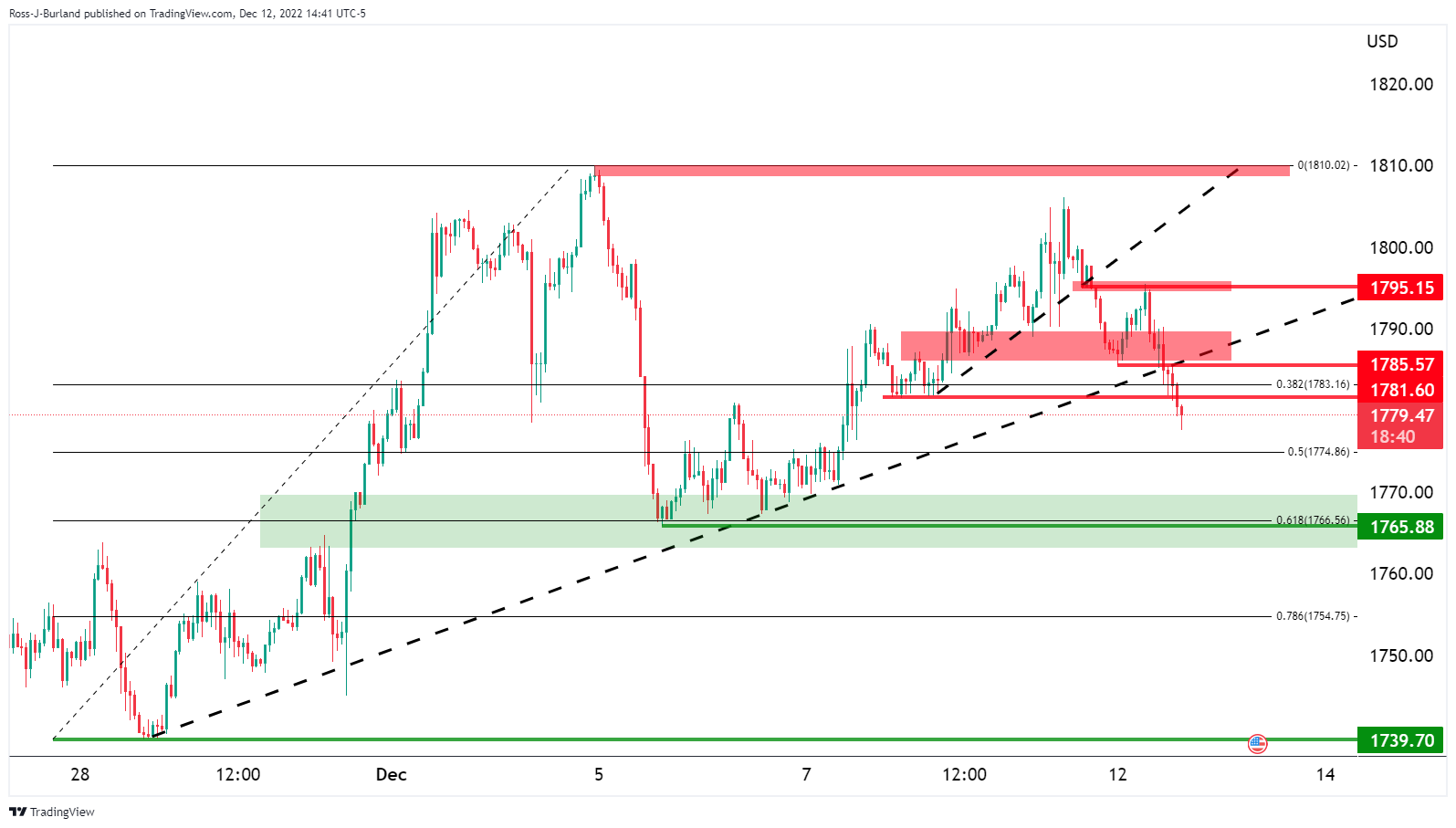
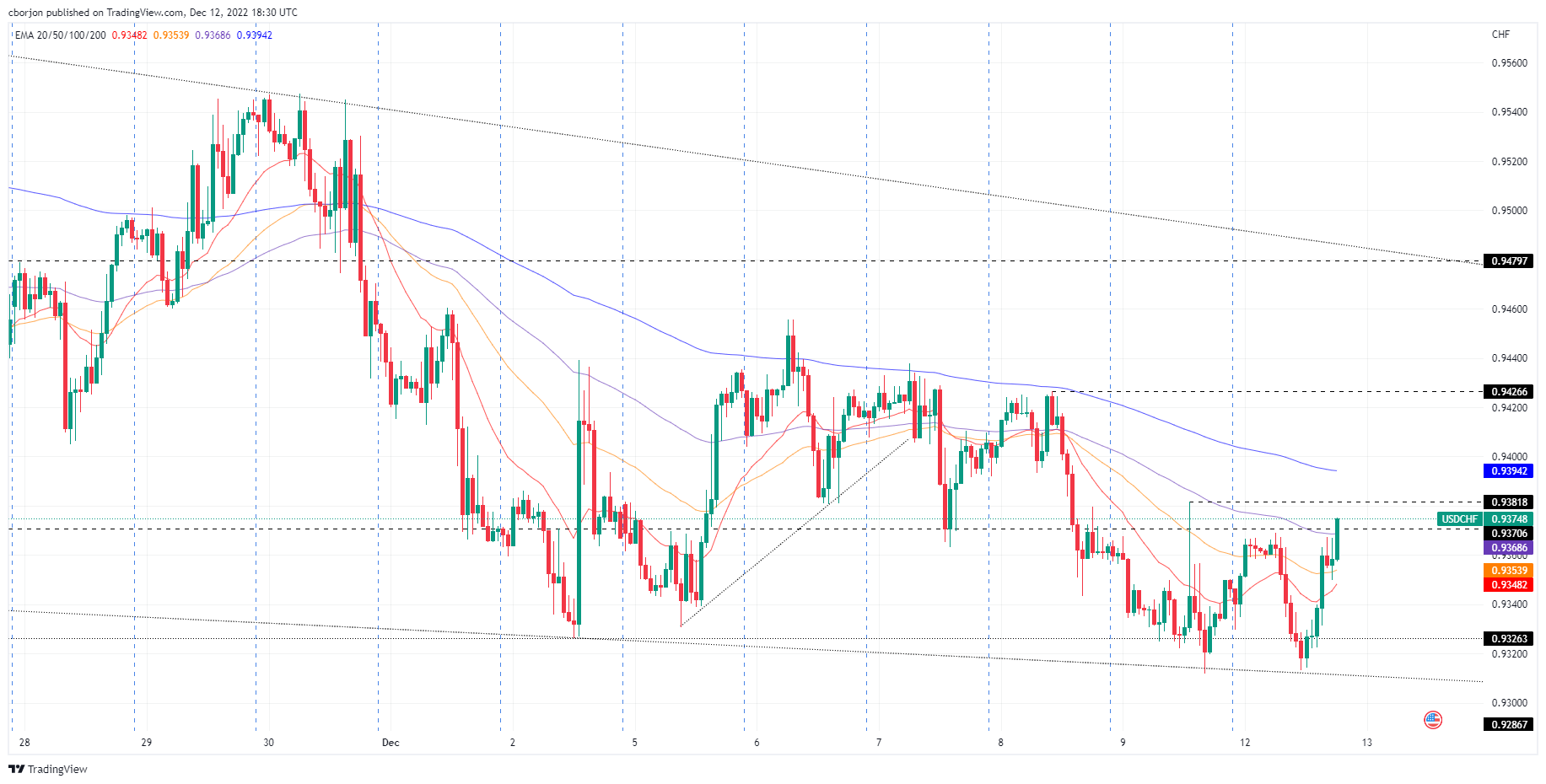
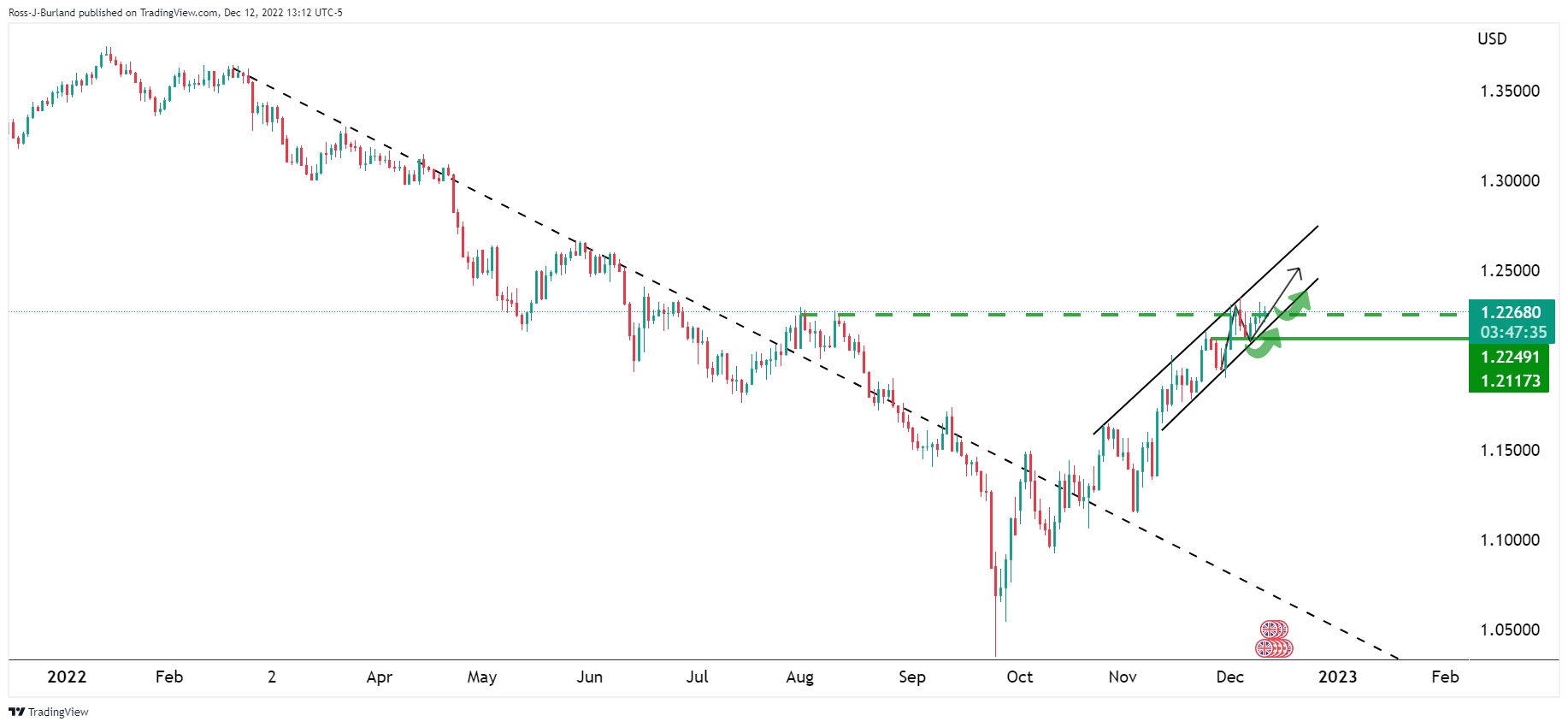

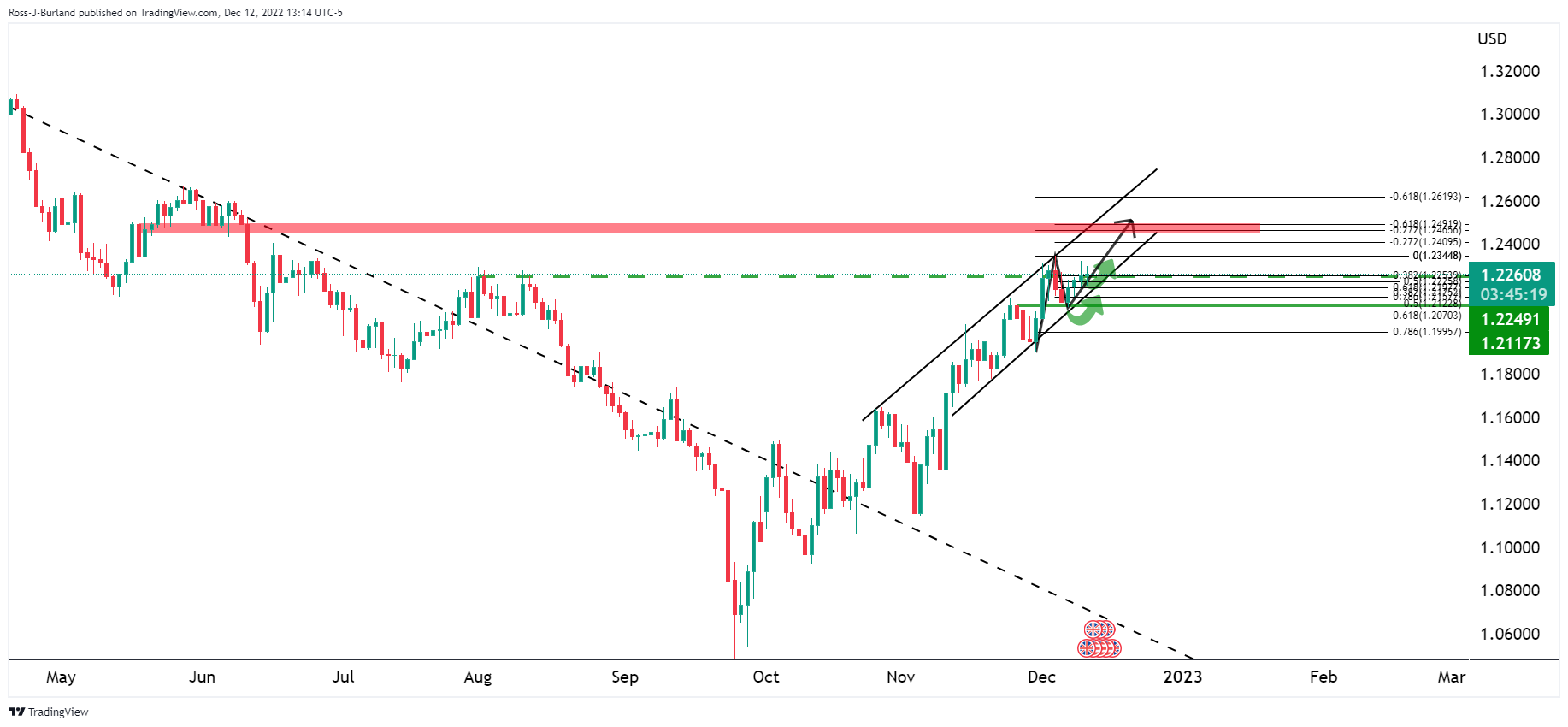
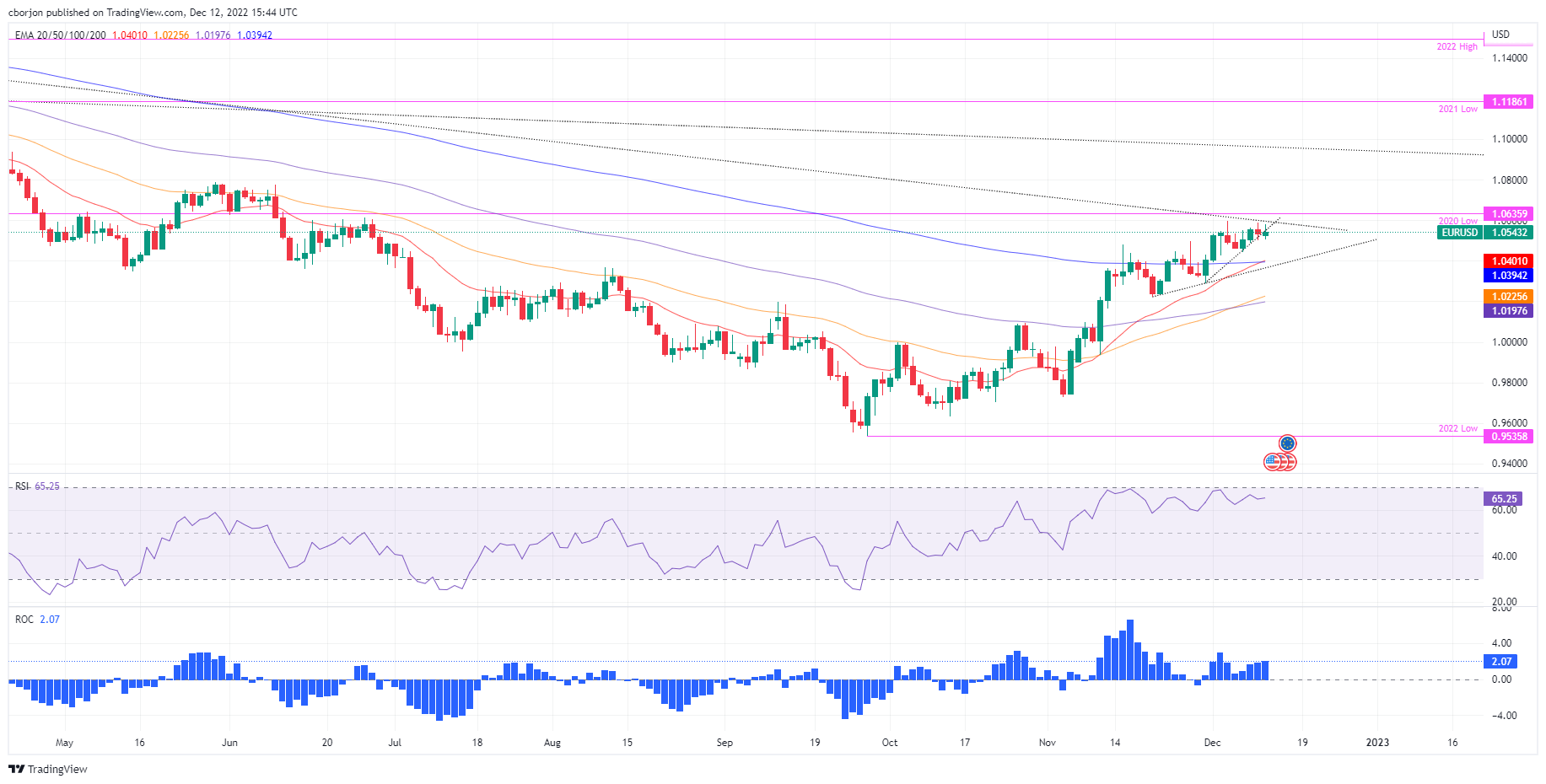

-638064246160923348.png)
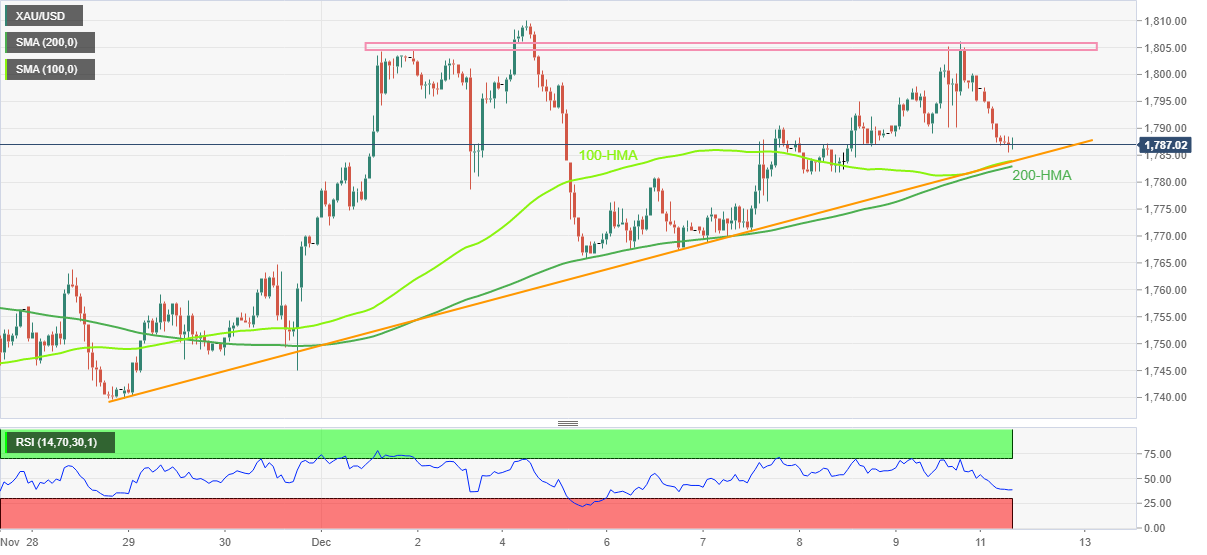
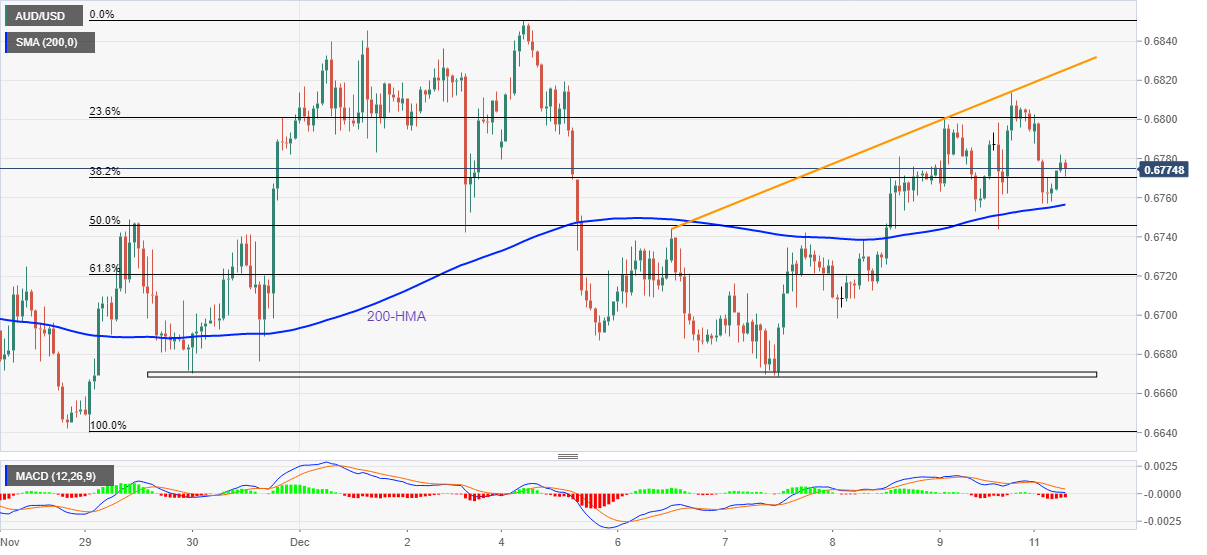
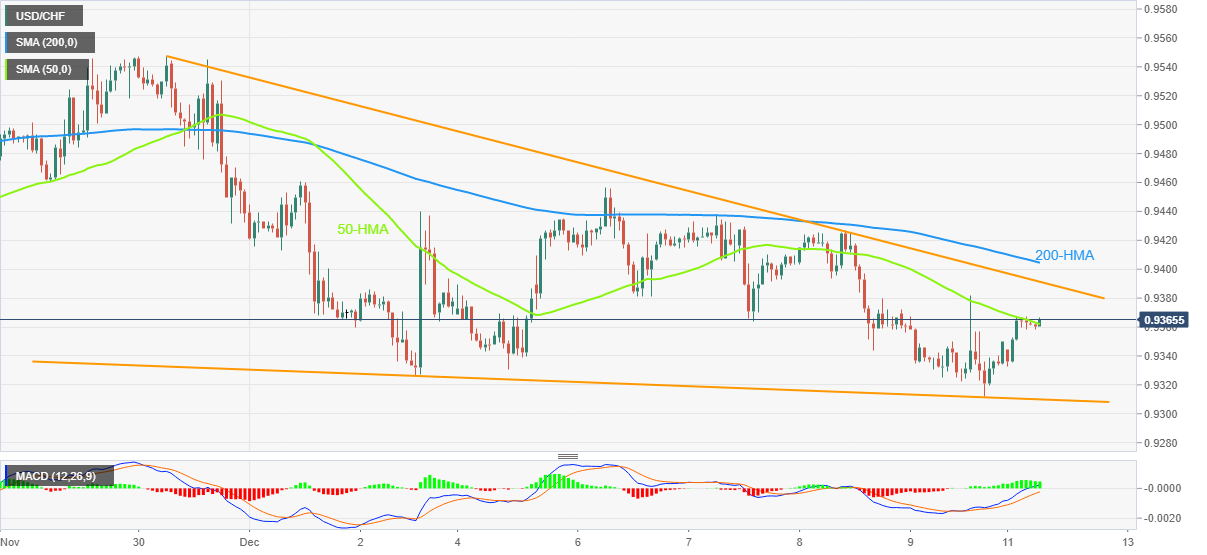
-638064165383911681.png)


